Market
Unexpected Artworks Dominate This Year’s Outsider Art Fair
The genre has been growing, for good reason.
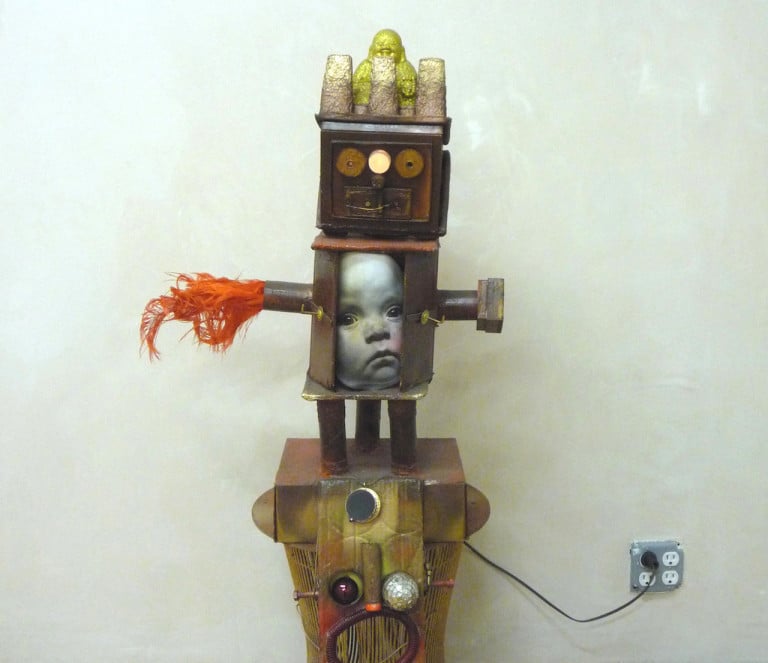
The genre has been growing, for good reason.

Sarah Cascone

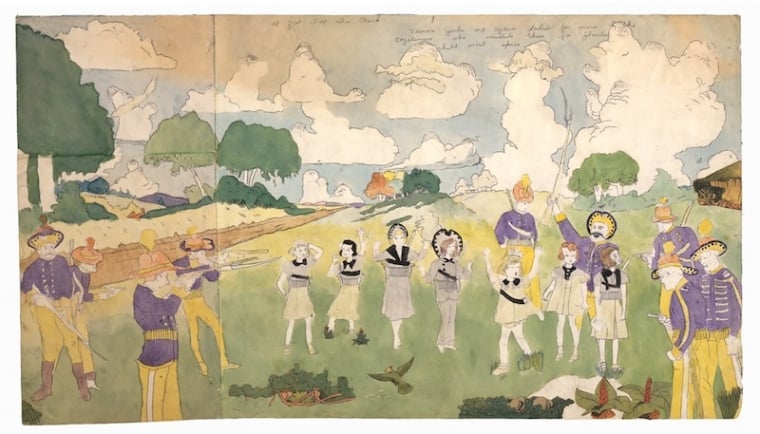
Henry Darger, Untitled (They are chased again however, and have to give up for want of breath).
Photo: Andrew Edlin Gallery.
Getting a jump on the 2016 art fair season is the Outsider Art Fair, on view this weekend in its new home at the Metropolitan Pavilion on West 18th Street. The 59 exhibitors have brought a wide range of material, proving that the art world’s so-called “outsiders” always have something unique to offer.
“We always do our best to have a mix of the classic masters of the field together with new discoveries,” fair owner Andrew Edlin told artnet News at the VIP preview on Thursday afternoon. He was already doing brisk business at his own booth for Andrew Edlin Gallery, selling one large Henry Darger drawing before the fair had even begun welcoming visitors.
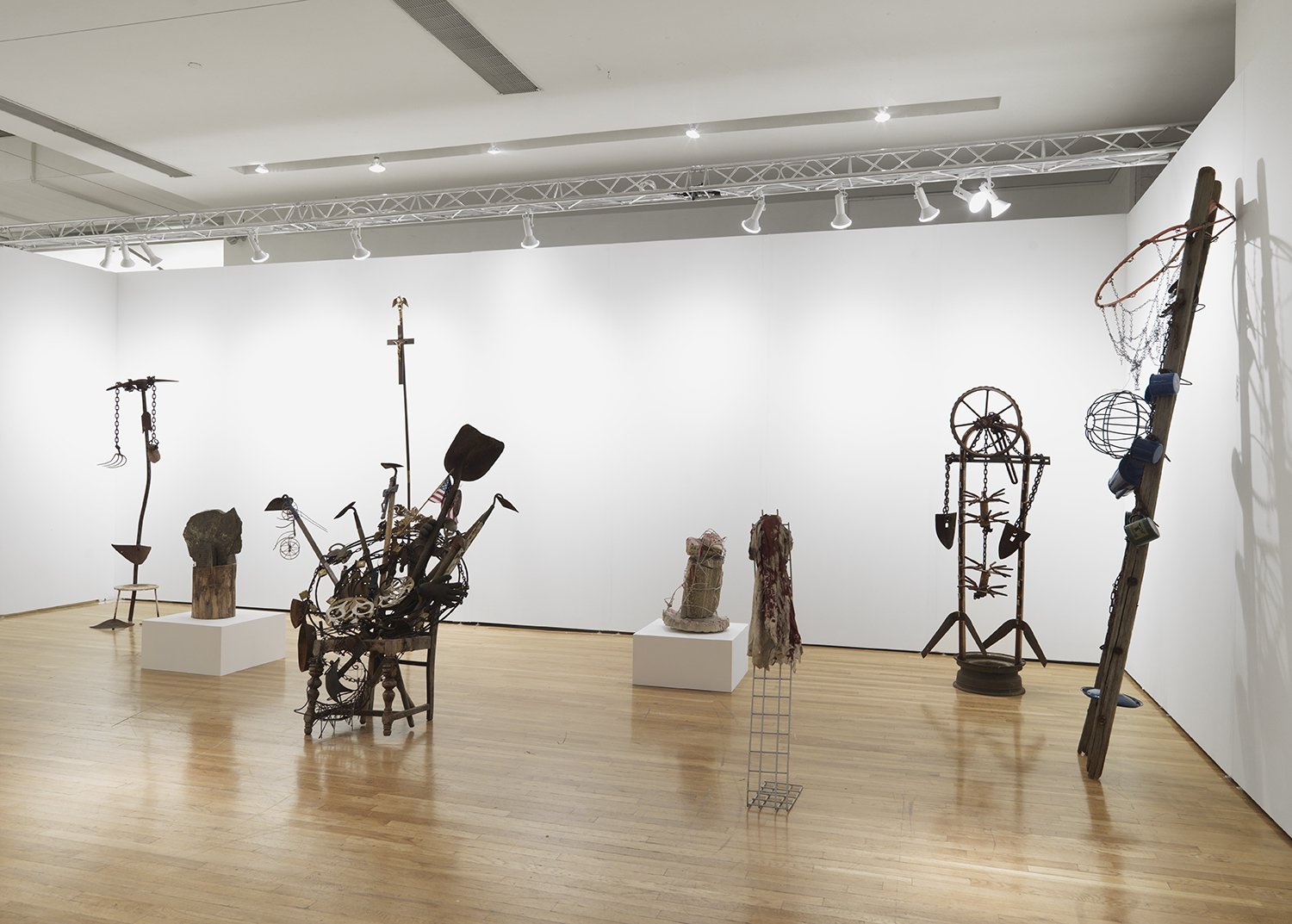
James Fuentes’s booth at the Outsider Art Fair features work by Lonnie Holley and Joe Minter.
Photo: courtesy James Fuentes.
The fair opens boldly with a two-artist presentation by James Fuentes, of sculptures by Lonnie Holley and Joe Minter, who director James Michael Schaeffer described to artnet News as “vernacular artists.” The work of the two men, both from Birmingham, pairs exceptionally well.
Another standout at Philadelphia’s Fleisher/Ollman Gallery, is Felipe Jesus Consalvos, a Cuban-American cigar roller who incorporated the labels of his trade into fantastic collages. “There’s also all kinds of other ephemera,” gallery co-owner John Ollman told artnet News, pointing to portraits of George Washington cut from dollar bills.
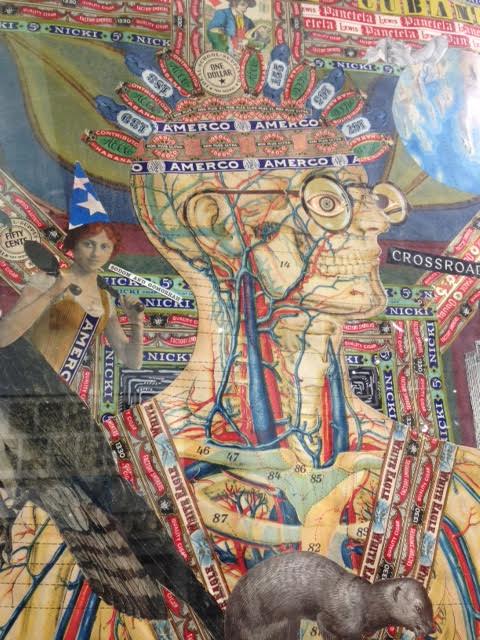
A detail of a Felipe Jesus Consalvos work on view at Fleisher/Ollman Gallery.
Photo: Sarah Cascone.
The works were discovered in a yard sale by a Philadelphia curator in 1983, and Fleisher/Ollman began selling off the lot in 2005. “These are sort of the last of the great pieces that we have,” said Ollman of two impressively-large works made from medical drawings.
Visitors to Marion Harris‘s booth can’t avoid the captivating gaze of Morton Bartlett‘s model children, wherein a fantasy family of large, realistic dolls are meticulously sculpted, outfitted, and photographed engaging in quotidian activities. The work was only discovered upon Bartlett‘s death in 1992, and has since appeared at the Metropolitan Museum of Art in New York, among other institutions.
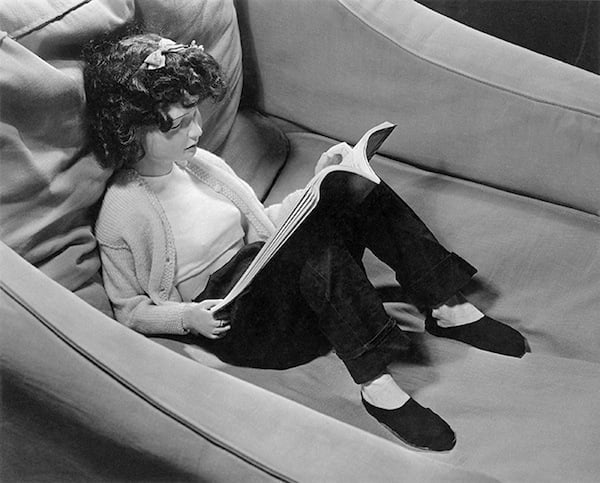
Morton Bartlett, Girl Reading in Chair.
Photo: courtesy Marion Harris.
While the original dolls have all been sold, the New York gallery is selling limited-edition prints of 12 of his fabulous, unsettling photographs—no word on whether there are plans in the works to market the almost-as-wonderful wallpaper, a print created from the images, that covers half of the booth.
Lindsay Gallery of Columbus, Ohio, impressed with Jacques Du-Glass‘s drawings of “The Town That Never Was”—fictitious Lynxbourgh, Indiana. The insanely detailed drawings are just scratching the surface of the artist’s fantasy world, however. Du-Glass, who was adopted as a child, also created detailed family histories for the town’s denizens, some of whom he imagined were his birth family.
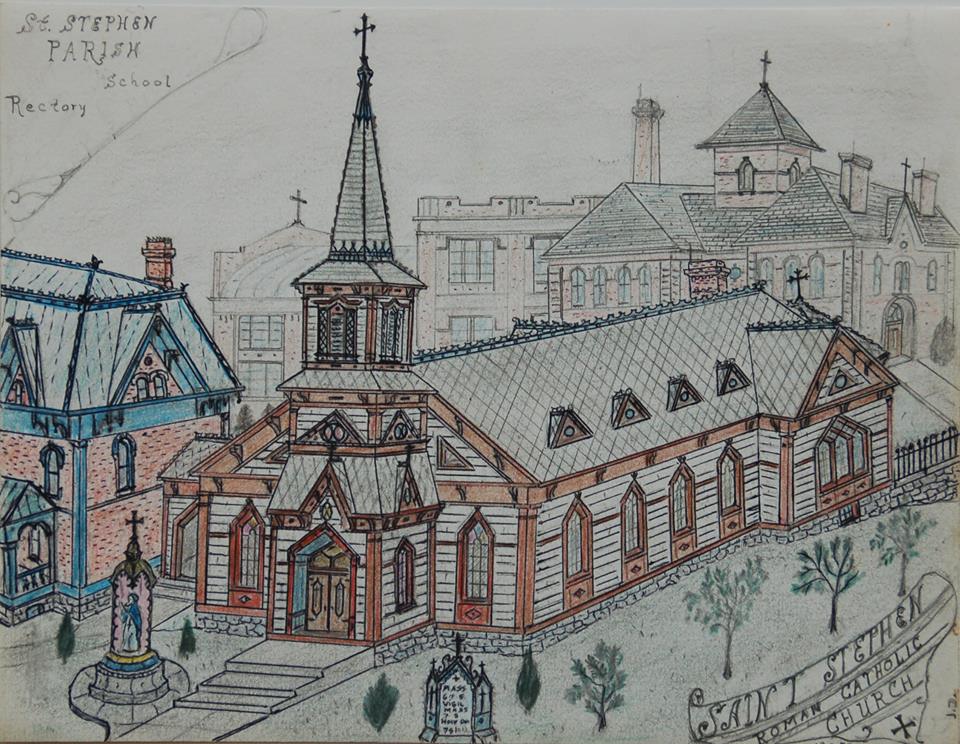
Jacques de Du-Glass, St. Stephen Parish School.
Photo: Lindsay Gallery.
At New York’s American Primitive, Texas musician-turned-artist Robert Adale Davis’s clothing-based sculptures manipulate thread in a truly unique manner, building up complex, spiderweb-like crosshatching that threatens to completely consume the original garments.
Davis, who has spent much of his adult life caring for his increasingly infirm mother, got started by sewing pendant-like embellishments for his concert attire, but his practice has since evolved into something else entirely. “They’re not really about wearing anymore,” noted gallery owner Aarne Anton of the resulting sculptures. “They’ve become objects.”
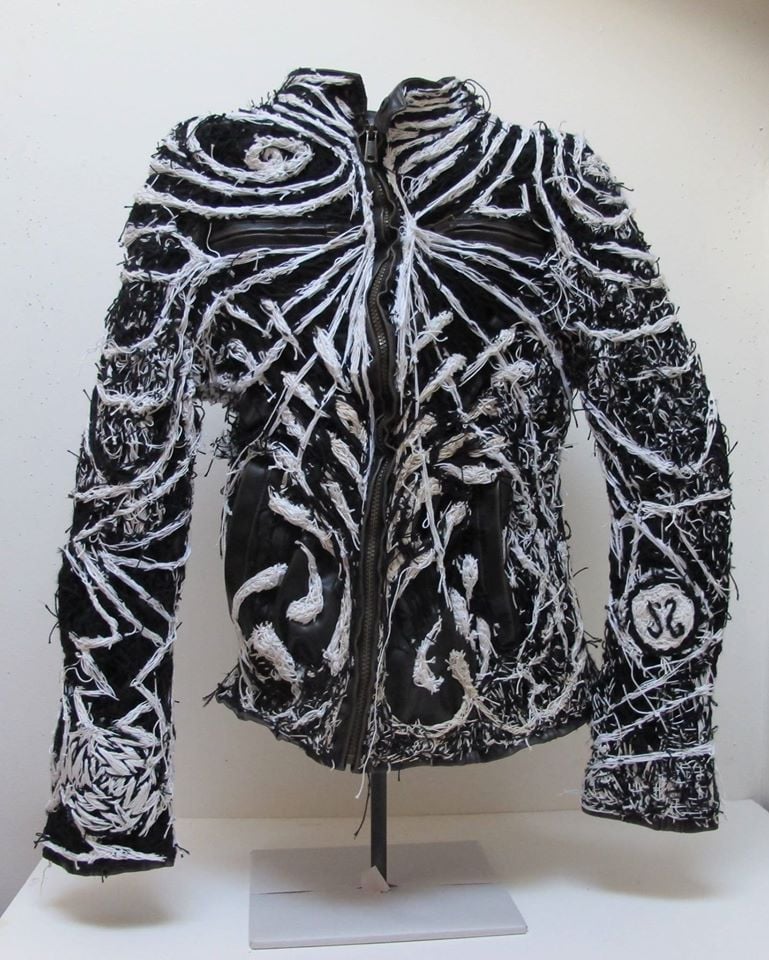
Robert Adal Davis, Untitled.
Photo: courtesy American Primative Gallery.
Opting for a more unique presentation was Shrine gallery, which displayed Hawkins Bolden’s scarecrow sculptures as they would have appeared in the blind artist’s front yard in Memphis: hung on a chicken wire fence, above a patchy lawn.
“Collectors would come and buy them and he basically thought they were taking them home for their backyards, which wasn’t really was happening,” said gallery owner and artist Scott Ogden. He participated in the 2015 fair as an independent dealer, but inaugurated a brand-new Lower East Side space at 191 Henry Street with a show of Bolden’s work that opened Sunday, January 17. (At the gallery, Ogden’s opted for a more traditional white cube presentation, sans chicken wire.)
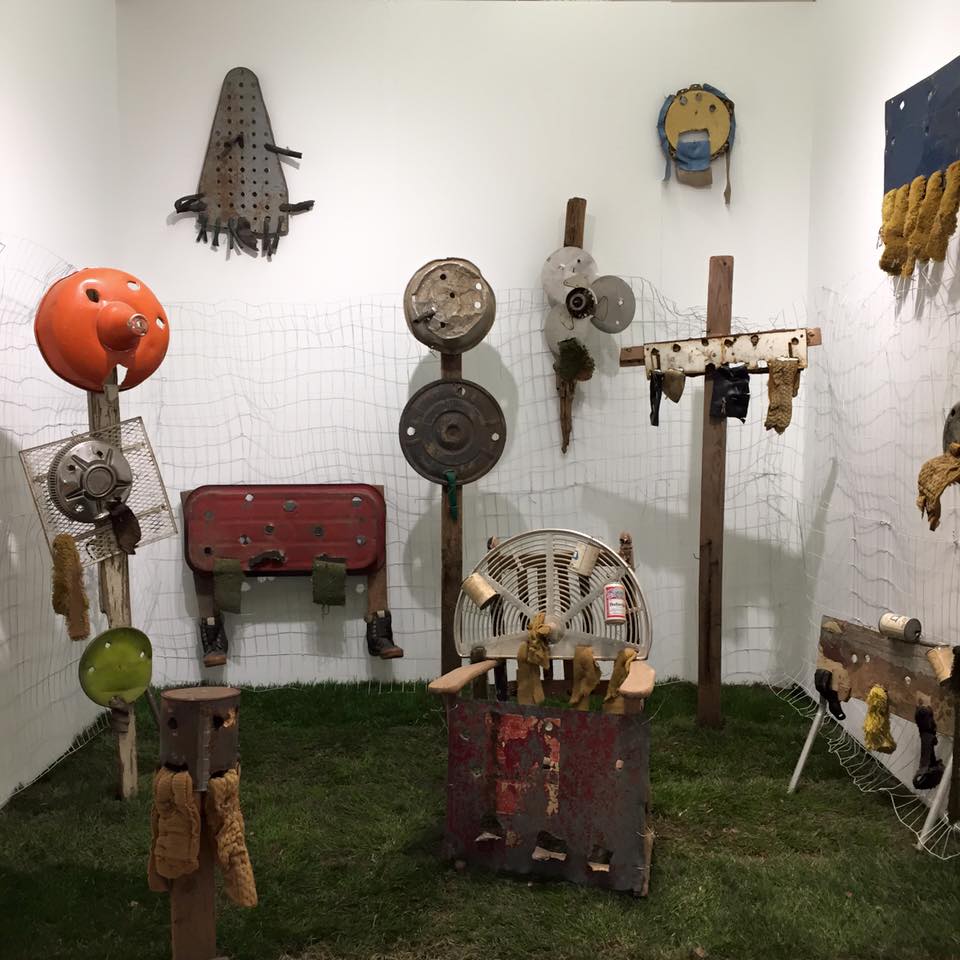
Shrine’s booth, featuring scarecrow sculptures by Hawkins Bolden.
Photo: courtesy the Outsider Art Fair.
The “outsider” label has come to encompass an increasingly broad range of work over the years, as evidenced by Gordon Payne‘s captivating sculptural paintings, shown in a special project curated for the fair by gallery owner Lee Plested.
Payne is the first to admit that his work is very much rooted in art historical tradition, telling artnet News that he was attracted to OSB board, a low-quality building material, as a canvas because “it reminded me of analytical cubism, the early Picassos and Bracques.”
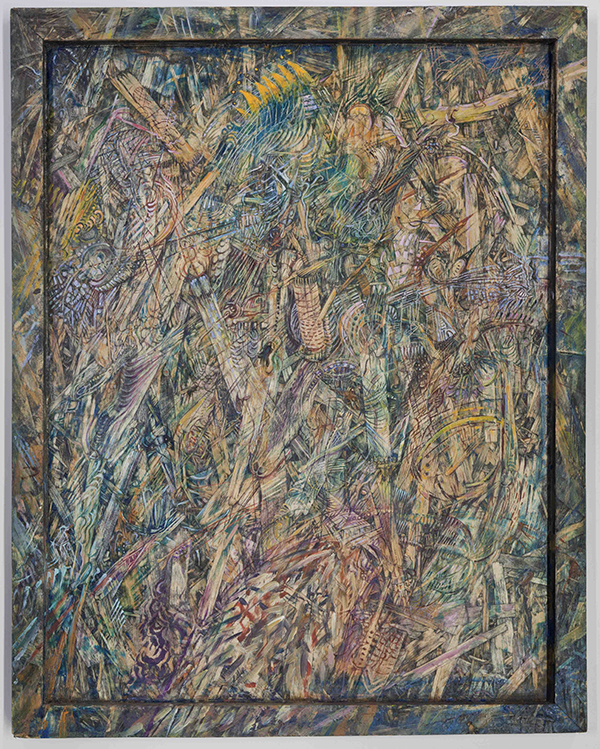
Gordon Payne, Ajanta.
Photo: courtesy the artist.
Despite attending art school and even teaching as a professor, “I never really identified as part of the art world,” Payne explained. So, after a few gallery exhibitions in the 1950s and ’60s, in a rejection of convention, he moved from Vancouver to the extremely remote Hornby Island, three-ferry rides away.
There, in addition to building his home by hand using driftwood and salvage wood, Payne perfected his richly-layered paintings, a myriad of hallucinatory images at once both abstract and figurative.
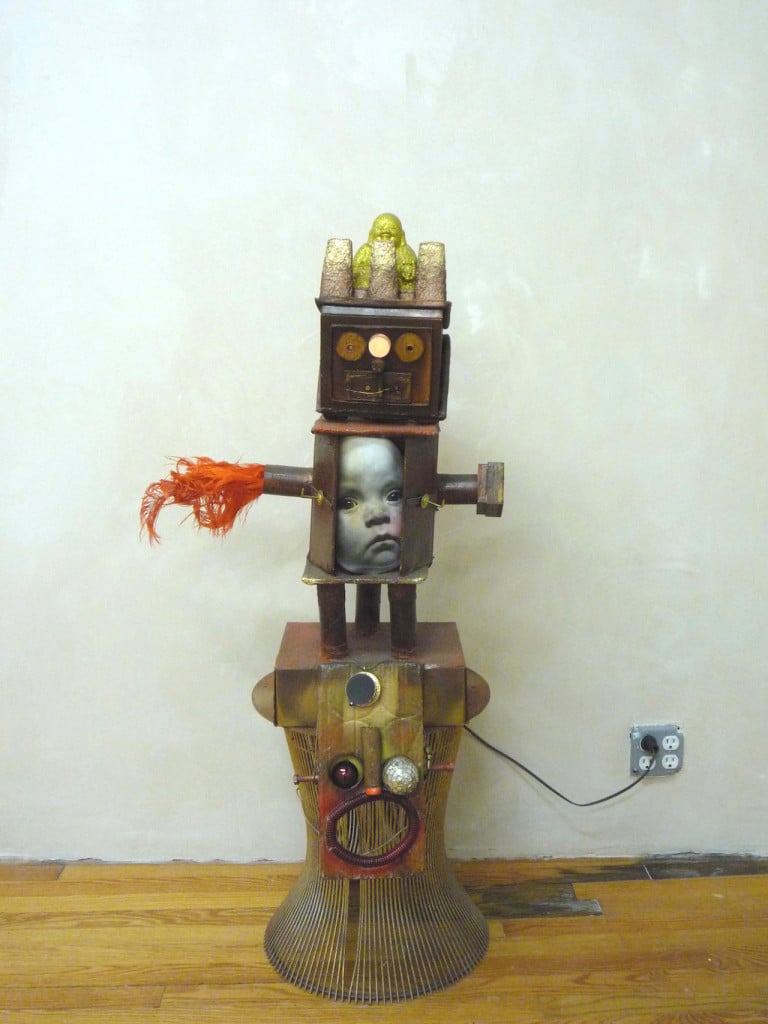
Daniel Swanigan Snow, Totem III (2010).
Photo: courtesy Cathouse FUNeral.
At Brooklyn’s Cathouse FUNeral, gallerist and filmmaker David Dixon is showing work by Daniel Swanigan Snow, who he met when he cast him a recent film. After a career in B movies, at the age of 54, Snow began creating eclectic assemblage works, gathering random materials from the streets of Brooklyn and Long Island. The works, housed in a particularly small booth, incorporate everything from a pizza box to a Barbie doll.
While artists such as Snow and Payne don’t match the traditional “outsider” image of reclusive geniuses, they are both clearly working in the margins of the contemporary art world, further demonstrating the growth of the genre.
The Outsider Art Fair is on view at the Metropolitan Pavilion, 125 West 18th Street, New York, January 21–24.